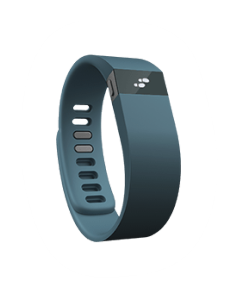 We’ve been thinking a lot about the recent Canalys report about market share in the wearables business, and we’ve been trying to tease some actual revenue numbers based in the results they published. This is valuable because these companies are either private and don’t publish revenues, or are public and don’t break this market down in their financials.
We’ve been thinking a lot about the recent Canalys report about market share in the wearables business, and we’ve been trying to tease some actual revenue numbers based in the results they published. This is valuable because these companies are either private and don’t publish revenues, or are public and don’t break this market down in their financials.
Canalys said that Fitbit accounted for just under 50 percent of all 2.7 million wearables bands sold in 1Q14, so let’s call that 1.3 million units. The Flex retails for $100, and probably wholesales for half that. Call Fitbit’s 1Q revenue $65 million, with everyone else in the band business splitting $70 million. So total 1Q wearable band revenue: $135 million. Assuming 25 percent growth this year (an arbitrary but not outlandish number), let’s set the 2014 wearable band revenue (which, remember, is roughly half the retail sales) at $675 million to $700 million.
The company said Nike’s Fuelband accounted for 10 percent of the market: 250,000 units, or $13.5 million in revenue.
Now let’s look at what Canalys calls the smart band segment, consisting of products like the Pebble or Galaxy Gear. The company says just a half-million smart bands shipped in 1Q14, 35 percent of them from Pebble, 29 percent from Sony, and 23 percent from Samsung. Prices in this segment are higher: Pebbles retail for either $150 or $250, and the Sony Smartwatch 2 retails for $200. Let’s guess the average selling price in this segment is $200; with the usual 50 percent markup, manufacturers pulled in $50 million. Pebble’s 1Q14 revenue was $17.5 million, using Canalys’s figures, Sony’s was $14.5 million, and Samsung’s was $11.5 million.
Canalys makes the correct point that the smart band market in particular will be volatile this year, with the coming Android Wear, the shipment of the Samsung Gear 2 and Gear Fit, and what everyone expects will be the Apple wearable product. None of this speaks to profitability, just revenue. And our numbers, it must be emphasized, are guesses and estimates, although they’re based on what appear to be reasonable numbers from Canalys, and we’ve shown our work. As ever, we’re interested in your feedback.